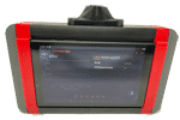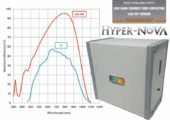L Marciniak, A Bednarkiewicz, K Trejgis… – … Chemistry Chemical Physics, 2019
Abstract
Numerous methods are known to improve the relative temperature sensitivity of luminescent thermometers. These methods include optimization of the host material, the size of the nanoparticles, the dopant ion type and concentration, or the excitation intensity and operation mode of the excitation source. Here we propose a new approach, which exploits temperature dependent host sensitized emission from Nd3+ and Yb3+ lanthanide ions in a YVO4 matrix. We found out that the emission ratio of these two activators strongly depends on temperature, the size of the nanocrystals and the relative dopant concentration. The novelty comes from the fact that CT → Nd3+ and CT → Yb3+ are temperature dependent, and therefore helps to double the relative temperature sensitivity from ∼0.12% K−1 up to 0.25% K−1 for the smallest nanocrystals. Based on the temperature dependent luminescence lifetimes of Nd3+ and Yb3+ activators, we also found out that Nd3+ → Yb3+ ET has 70–75% efficiency and is temperature dependent.

… The decay profiles were collected using a LeCroy WaveSurfer 400 oscilloscope and microflash lamp. Emission spectra as a function of temperature were measured using SILVER-Nova Spectrometer from Stellarnet





